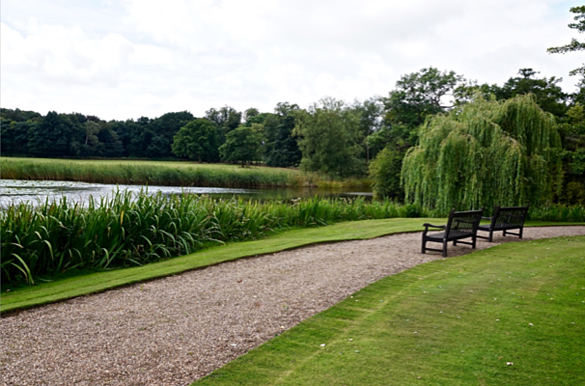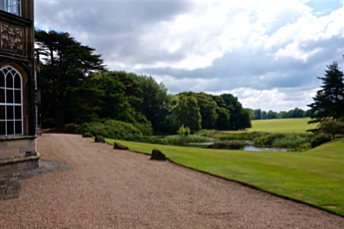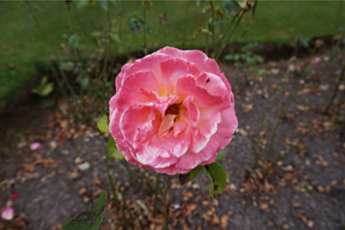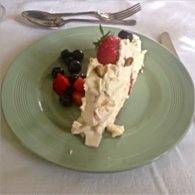English Gothic Live: Tyesha’s Blog
Past to Present: A Look Into Gothic Revival Architecture In An Elizabethan Manor House
Last summer, twelve students and one professor shared an unforgettable experience called English Gothic Live, a course on medieval and medievalist architecture which we studied on site while based at the University of Warwick. One of the course requirements was for each student to write a blog entry, and we will be posting all of those here over the coming weeks.

For the past couple of weeks, we have been visiting and learning about specific hallmarks of English Gothic architecture, however today [August 10] we learned about its successor by visiting a unique manor house known as Arbury Hall. Arbury was originally a medieval priory, but was largely re-built first in the Elizabethan period and then again in the 18th century, by Sir Roger Newdigate.
When we arrived I was awestruck by how assertive and dominant this mansion was over its landscape! The grey stones, symmetrical facades, series of pinnacles, and crenellations on the mansion proved this to be a building of power and wealth. As such, this mansion is very picturesque because of its quaint and captivating presence over a vast landscape. We were given 30 minutes to wonder the ground of the mansion but personally, I felt as though that was not enough time. There were many pathways, rose gardens and landscape to explore that when it came time for lunch I had only seen maybe half of the land. That being said, I made sure to get a glimpse of the 18th century Gothic renovations inside.





